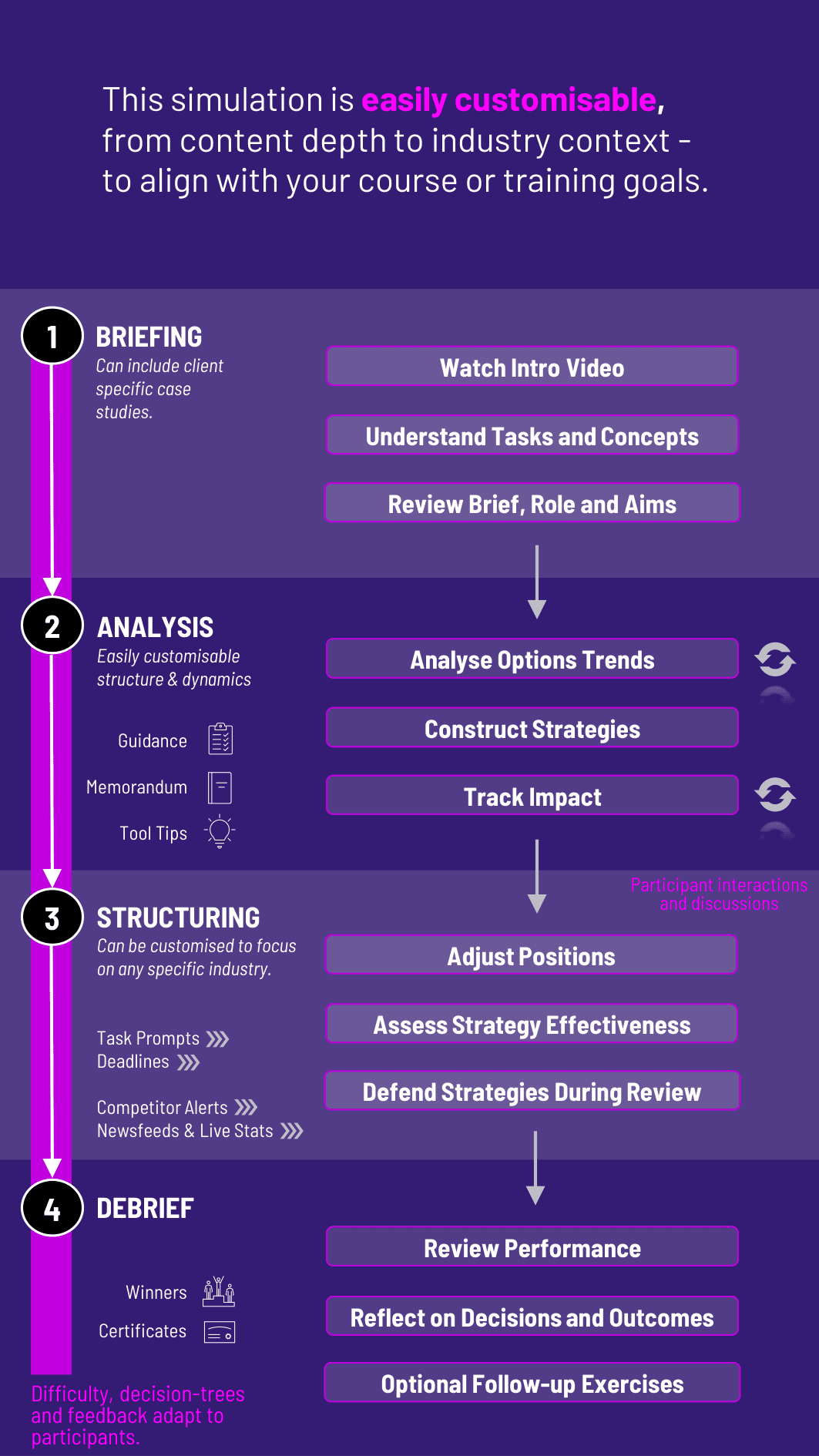
Students take on the role of financial strategists and traders, pricing, buying, and selling options to hedge, speculate, and construct strategic payoffs in our Options Simulation.
Call and Put Options: Mechanics, payoffs, and terminology
Option Strategies: Spreads, straddles, collars, protective puts, covered calls
The Greeks: Delta, Gamma, Theta, Vega, and Rho in practical decision-making
Implied vs Historical Volatility
Options Pricing: Intrinsic vs time value, Black-Scholes assumptions
Risk Management with Options: Limiting downside, managing leverage
Market Reactions: How news events and earnings announcements affect options portfolios


Analyze underlying asset behavior and volatility trends
Construct options strategies to hedge or speculate
Track the impact of time decay and market changes on portfolio value
Adjust positions in response to simulated events and market movement
Calculate payoff diagrams and assess strategy effectiveness
Defend their strategies in a final review or trading debrief
By participating in this simulation, students gain deep, intuitive understanding of options through application. They learn to:
Select appropriate options strategies based on market outlook and objectives
Understand how each of the Greeks affects a position’s performance
Recognize how time, volatility, and price movement interact in options pricing
Communicate options decisions in structured, professional terms
Respond confidently to changes in market sentiment and pricing models
Do students need prior options experience? Basic familiarity with financial instruments is helpful, but the simulation includes a structured onboarding module to introduce key options concepts.
Can it handle complex strategies? Yes. The simulation supports multi-leg strategies and dynamically calculates risk and return. It can be tailored to beginner or advanced cohorts.
What asset classes are covered? The simulation includes equity options, with optional extensions into index or FX options depending on course needs.
How long does the simulation take? A typical session runs 2–3 hours, but can be extended into a multi-round competition or cumulative project.
How is student performance evaluated? Performance is based on profitability, risk-adjusted return, strategy alignment with stated objectives, and communication of investment rationale.
Join this 20-minute webinar, followed by a Q&A session, to immerse yourself in the simulation.
or
Book a 15-minute Zoom demo with one of our experts to explore how the simulation can benefit you.